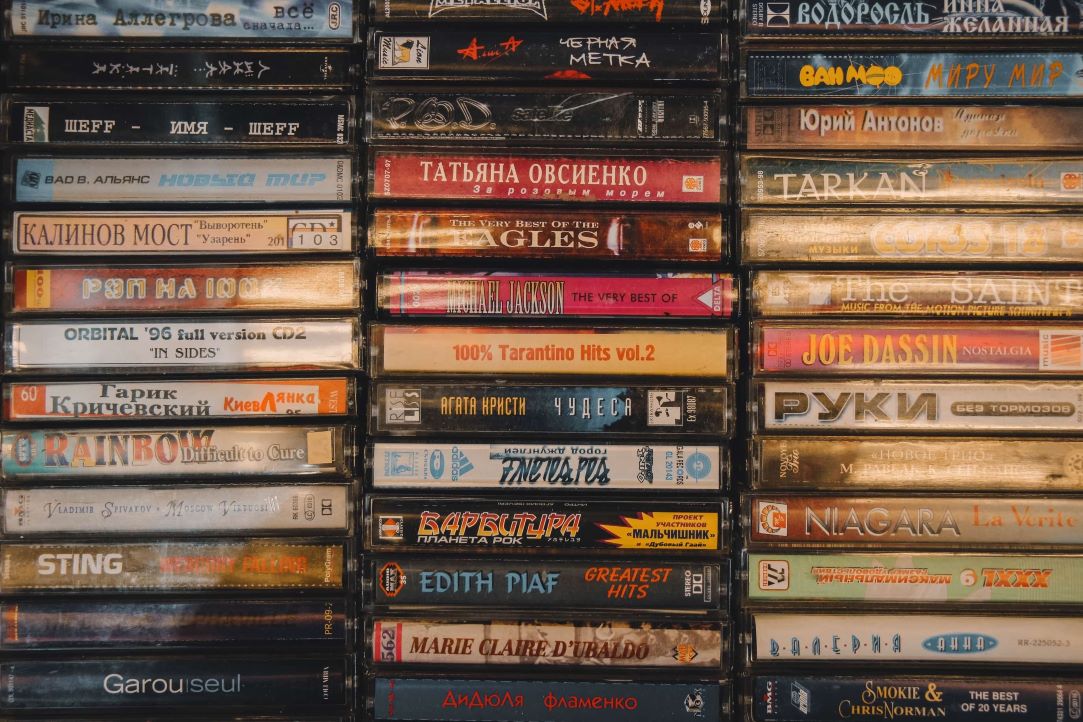How Intertextuality Shapes Modern Russian Culture

Have you ever thought about how our literature and music became what it is today? In today’s article we will talk about how intertextuality helped to create a unique style of writing books and music in last century that became part of our culture. Join in to learn a lot of new about Russian culture of the late 20th century and to have a chance to look at it from a different perspective.
Intertextuality is a term, that was introduced in 1967 by the poststructuralist theorist Yulia Kristeva[1]. The idea behind this word is that many texts in modern culture can explicitly or implicitly refer to each other in a lot of ways. In a broad sense this term claims that culture may evolves and develop based on another culture. You can see that in many aspects such as music and literature. The creation of this theory became one of the reasons why there were a lot of people interested in how one culture evolves from quotes and many patterns that are inherent in another culture. One the most intriguing themes regarding this theory is that there a lot of problems that involves quotation and citation of one authors by another authors from a different culture[2]. By that they meant that some authors used another person’s words In theirs’s work and based on them a new material was created. To be short, intertextuality is when one text may be remotely based on another texts, or uses some parts from another material. And that principle is applicable on many subjects besides literature.
Let’s start off with a literature, to be specific, with Boris Akunin*. You may know this author for his famous detective novels such as Azazel and Leviathan or other books from series called The adventures of Erast Fandorin. If you are into that genre of literature, you know about Arthur Conan Doyle’s Sherlock Holmes, the famous detective from 19th century England. It was inevitable that this character had a great impact on Boris. So, the first example for intertextuality in a modern Russian literature is the explicit reference to the works of Conan Doyle and his characters in the collection of works by Akunin* called Jade Rosary[3]. In the story from that collection called The Prisoner of the Tower there are characters called Sherlock Holmes and Dr. Watson, remember them? Furthermore, Akunin* borrows Arsene Lupine from Maurine LeBlanc. And that trio works together with a Boris’ character Erast Fandorin. Here we see how modern author uses texts of other author and bases his story on already existing material. This example is very post-modernish and perfectly shows how one texts can have a significant effect on other authors.
Next, let’s talk about some intertextuality in music, shall we? Perhaps everyone knows Zemfira in Russia, she is one the most popular and influential artists for the last 20 years. She released many great songs and albums and helped to develop Russian music to the state in which it is now. But not a lot of people know about her musical inspirations. She is a big fan of Victor Tsoy’s songs and she has a lot of great covers of his songs like Cuckoo and A Pack of Cigarettes that sounds great with her vocals and musical arrangements. As an example of intertextuality I would like to talk about her performance of a song called Tree[4], that was originally written by Tsoy in 1981 and released on his album 45.
The idea of this song when it was written by Tsoy was about the transmission of wisdom through generations and how it can be easily destroyed be someone[1]. The lyrics of the song are accompanied by a quiet acoustic guitar and a melody on a flute that sets you in a spiritual mood. As an example I will show you the ending scene from the movie Leto, it is about Victor Tsoy’s early years and perfectly encapsulates what this song is about[2]. And that is when intertextuality begin to creep in. If you listen closely to the melody and arrangements of Zemfira’s performance, you may notice how melancholic and hopelessly sounds the melody, chords and her vocals. What was semi-hypnotic song about wisdom became the melancholy ode to loosing hope and will to live. Like words can be quoted and changed in new text, music and arrangements can be a reference too and making music sound completely opposite to what it was intended is a great example of intertextuality in modern Russian music.
I hope this short article helped to understand a little bit how cultural continuity and intertextuality work within the modern Russian literature and music and how cultures from different time connects and creates something new.
Text by
Sergey Nesterov
* Б. Акунин признан иностранным агентом и включен в Перечень организаций и физических лиц, в отношении которых имеются сведения об их причастности к экстремистской деятельности или терроризму.
